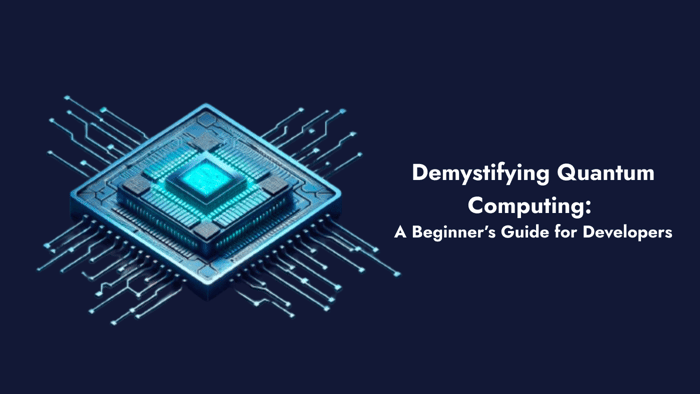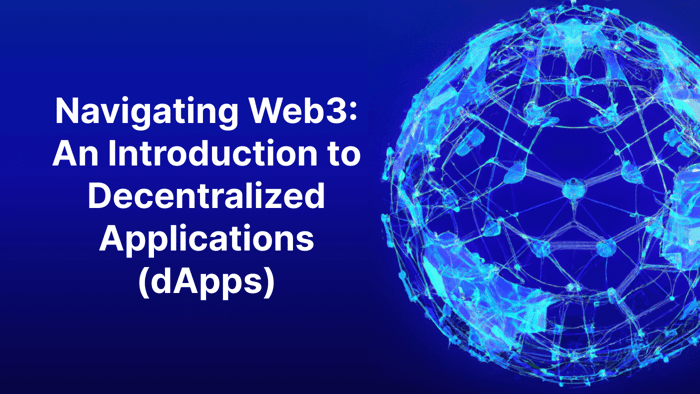Understand the basics of Quantum Computing
The world of computing is poised for another revolution, this time powered by the strange and fascinating laws of quantum mechanics. Quantum computing, no longer confined to science fiction, is becoming a tangible reality, promising to solve problems once deemed impossible and tackle challenges beyond the reach of even the most powerful classical computers. But for developers, this emerging technology can seem shrouded in mystery, its concepts seemingly plucked from an alternate universe.
At its core, quantum computing leverages the principles of quantum mechanics, such as superposition and entanglement, to perform calculations at unprecedented speeds. Unlike traditional computers that use bits to represent data as either 0s or 1s, quantum computers use quantum bits, or qubits, which can represent and process a vast array of data simultaneously. This fundamental shift in data processing opens up new frontiers in various fields, from cryptography to drug discovery, signalling a transformative leap in how we approach complex problems.
The goal of this guide is to demystify quantum computing for developers, a task that has become increasingly pertinent as the technology transitions from theoretical exploration to practical application. As we enter 2024, advancements in quantum hardware, algorithms, and software are bringing us closer to realizing the full potential of quantum computing. IBM, a pioneer in the field, has made significant strides in improving qubit quality and developing new hardware architectures based on tunable couplers.
But don't worry, there won't be any equations or heavy-duty physics involved. We'll translate the quantum jargon into language developers can understand, using real-world examples and interactive tools to illustrate the concepts. We'll also delve into the practical aspects, introducing you to popular quantum programming frameworks and cloud platforms, enabling you to get your hands dirty and experiment with this groundbreaking technology.
Understanding Quantum Computing
Quantum computing represents a radical departure from classical computing, rooted in the principles of quantum mechanics—a fundamental theory in physics that describes the behavior of energy and matter at the smallest scales. Unlike classical computing, which relies on bits to process information in a binary format (0s and 1s), quantum computing utilizes qubits (quantum bits) as the basic unit of information. Qubits have the remarkable ability to exist in a state of superposition, meaning they can represent both 0 and 1 simultaneously. This characteristic allows quantum computers to process a vast amount of possibilities concurrently, exponentially increasing their computational power over classical systems for certain tasks.
But that's not all. Qubits can also exhibit a phenomenon called entanglement, where their fates become linked across vast distances. Imagine two coins spinning in perfect synchronicity, no matter how far apart they are. Measuring one instantly determines the state of the other, defying classical logic and enabling instant communication and synchronized calculations.
Superposition is just one facet of the quantum realm. When qubits become entangled, the state of one qubit will instantly correlate with the state of another, no matter the distance between them. This property enables quantum computers to perform complex calculations more efficiently, as the state of entangled qubits can be manipulated to represent and solve complex problems more effectively than classical computers.
The interplay between qubits, superposition, and entanglement forms the backbone of quantum computing. Together, these principles enable quantum systems to explore multiple solutions simultaneously, making them particularly suited for tasks such as the simulation of quantum physical processes, optimization problems, and cryptography. However, leveraging these quantum phenomena comes with its own set of challenges, including maintaining the stability of qubits and controlling or mitigating quantum decoherence and error rates. Despite these hurdles, the ongoing advancements in quantum algorithms and error correction techniques are paving the way for practical and scalable quantum computing solutions.
This is just the tip of the iceberg. In the next sections, we'll explore deeper into these fascinating concepts, and how they tackle problems in real life.
Application of Quantum Computing in Real-life
So, we've established that quantum computing isn't just theoretical magic. Its real-world applications are diverse, spanning various industries and leveraging the unique capabilities of quantum mechanics to solve complex problems more efficiently than traditional computers. Let's explore some exciting applications:
- Pharmaceuticals: Quantum computing offers the potential to drastically reduce the time and cost associated with drug discovery and development. By simulating the molecular and quantum mechanical interactions of drugs and targets, quantum computers can predict the efficacy and side effects of potential drugs before they are synthesized in the lab. This capability could accelerate the development of new treatments and therapies, particularly for complex diseases like cancer or Alzheimer's.
- Finance: The finance sector stands to benefit significantly from quantum computing through the optimization of portfolios, risk analysis, and fraud detection. Quantum algorithms, such as Grover's algorithm, can search through large databases more efficiently than classical algorithms, offering a quadratic speedup. This makes quantum computing an invaluable tool for analyzing market data, optimizing trading strategies, and detecting fraudulent activities in a fraction of the time currently required.
- Logistics: Logistics and supply chain management can also be transformed by quantum computing. Optimization problems, such as route planning, warehouse management, and inventory levels, are ideally suited for quantum algorithms. These algorithms can analyze a vast number of variables and constraints simultaneously, identifying the most efficient solutions to reduce costs and improve delivery times.
These are just a few examples. The potential applications extend to materials science, artificial intelligence, and machine learning, promising breakthroughs in areas like clean energy, personalized medicine, and advanced materials development.
Shor’s Algorithm, famous for its potential to factor large integers exponentially faster than the best-known classical algorithms, poses a significant threat to current cryptographic systems but also encourages the development of quantum-resistant cryptographic methods. Its ability to break widely used encryption schemes underscores the need for new security protocols in the age of quantum computing.
Grover’s Algorithm, on the other hand, offers a quadratic speedup for unstructured search problems. This makes it particularly useful in fields where searching through large datasets is common, such as database management, drug discovery, and cybersecurity. While not as disruptive as Shor's Algorithm, Grover's offers a tangible improvement in efficiency for a wide range of applications.
Together, these algorithms exemplify the dual nature of quantum computing: its potential to both challenge existing paradigms and offer new solutions. As quantum computing continues to develop, its impact across various sectors will undoubtedly grow, heralding a new era of computational capabilities and applications.
However, it's important to manage expectations. Quantum computing is still in its early stages. While applications are emerging, widespread adoption will require advances in hardware and software.
Challenges and Limitations
While the potential of quantum computing is undeniable, the path to widespread adoption isn't smooth sailing. The development of quantum computing faces several formidable challenges, which must be overcome to realize the full potential of this groundbreaking technology.
Some of these challenges include:
- Error Rates: Quantum computers are inherently more prone to errors than classical computers due to quantum decoherence and noise. Qubits are extremely sensitive to their environment, and any interaction with the external world can cause them to lose their quantum state, resulting in errors. Developing effective quantum error correction methods is crucial to mitigate these errors. Quantum error correction involves encoding a logical qubit into several physical qubits, allowing the system to detect and correct errors without measuring the quantum state directly. Despite progress in this area, achieving the fault tolerance necessary for practical quantum computing remains a considerable challenge.
- Scalability: Building a quantum computer with a sufficient number of qubits to perform complex computations is another major hurdle. As the number of qubits increases, so does the complexity of the system, including the need for more sophisticated error correction techniques and the challenge of maintaining qubit coherence. Scalability is not just about increasing the number of qubits but also about maintaining their quality and the interactions between them. Advances in qubit technology, such as the development of topological qubits, which are more stable against environmental noise, are among the efforts to address scalability challenges.
- Cooling Requirements: Quantum processors must be kept at extremely low temperatures, close to absolute zero, to maintain qubit stability and coherence. This is achieved using sophisticated dilution refrigerators, but the cooling requirements pose a significant engineering challenge, especially as systems scale up. The infrastructure needed to maintain these temperatures is complex and expensive, limiting the accessibility of quantum computing technology.
- Software Development: Creating quantum algorithms that effectively harness the power of qubits is another challenge. Traditional programming paradigms don't translate directly to the quantum realm. New tools and frameworks are needed to design and optimize algorithms for specific tasks, requiring collaboration between developers, scientists, and engineers.
Despite these challenges, ongoing efforts in both quantum software and hardware development are making steady progress. On the software side, quantum programming languages like Qiskit for IBM's quantum computers and Cirq for Google's quantum processors are being developed and refined to make quantum computing more accessible to researchers and developers. These tools are crucial for designing algorithms, simulating quantum circuits, and interfacing with quantum hardware.
On the hardware front, research into new qubit technologies, error correction schemes, and quantum architecture designs is advancing. Companies and research institutions are exploring various types of qubits, such as superconducting qubits, trapped ions, and photonic qubits, each with its advantages and challenges. Additionally, the development of hybrid quantum-classical systems and quantum algorithms optimized for NISQ (Noisy Intermediate-Scale Quantum) computers are interim solutions aiming to harness quantum advantages even before fully error-corrected quantum computers become available.
Getting Started with Quantum Development
If you are interested in embarking on the journey of quantum development, a solid foundation in the following can greatly facilitate the learning process:
- Mathematical comfort: A background in linear algebra, quantum mechanics, and classical computing concepts is highly beneficial. Linear algebra is crucial for understanding quantum states, superposition, and entanglement, while a basic grasp of quantum mechanics principles helps in comprehending the behavior of quantum systems.
- Solid foundation in programming: Familiarity with Python, Java, or C++ will ease your transition to quantum languages. Familiarity with classical computing, including algorithms and data structures, is also advantageous, as it provides a comparative basis for understanding quantum computing's unique capabilities and challenges.
To get started with quantum computing, here are a few steps and resources:
- Learn the Basics: Begin with introductory materials on quantum computing to understand its principles and how it differs from classical computing. The IBM Quantum Computing Guide (https://quantum-computing.ibm.com/docs/guide) and Microsoft Quantum Development Kit documentation (https://docs.microsoft.com/quantum/) are excellent starting points.
- Explore Online Courses and Tutorials: Many online platforms offer courses in quantum computing and quantum programming. Coursera, edX, and FutureLearn have courses designed in collaboration with leading universities and organizations in the field.
- Experiment with Quantum Programming: Practical experience is invaluable. Start experimenting with quantum programming languages and simulators to gain hands-on experience.
- Qiskit: Developed by IBM, Qiskit is an open-source quantum computing software development framework that allows users to work with quantum circuits and algorithms. The official Qiskit documentation provides a comprehensive guide to getting started with quantum programming using Qiskit.
- Cirq: Created by Google, Cirq is a Python library for writing, simulating, and running quantum circuits on quantum computers. Beginners can explore its functionalities through the Cirq documentation.
- Quipper: Though not as widely used as Qiskit and Cirq, Quipper is a quantum programming language developed by Microsoft, it uses Haskell for concise and expressive quantum programming, that offers powerful abstractions for quantum computing.
- Experiment with exercises: Get hands-on with platforms like IBM Quantum Experience, Google Quantum AI's Cirq playground, or Microsoft Quantum's Q# Jupyter notebooks. These offer beginner-friendly exercises and simulators to test your code.
- Join Quantum Computing Communities: Engaging with the quantum computing community through forums, social media groups, and conferences can provide support, insights, and networking opportunities. Websites like Quantum Computing Stack Exchange are great for asking questions and sharing knowledge.
For further exploration, check out online quantum hackathons and challenges. They offer opportunities to collaborate, solve real-world problems, and gain practical experience in a fun and competitive environment.
The Future of Quantum Computing
The path of quantum computing stretches far beyond current limitations, promising breakthroughs that will redefine the future.
A key milestone in this journey is the concept of quantum supremacy— the point at which a quantum computer can perform a calculation that is practically impossible for classical computers to execute within a reasonable timeframe. Achieving quantum supremacy would mark a significant leap forward, demonstrating quantum computing's potential to solve complex problems far beyond the reach of current technology. This milestone has been claimed in specific instances but remains a subject of ongoing research and debate, as the field continues to evolve.
As quantum computing advances, it is poised to revolutionize various sectors, including cryptography, materials science, pharmaceuticals, and more, by enabling calculations and simulations that are currently unfeasible. However, this power comes with significant ethical and social implications, particularly concerning data privacy and cybersecurity. Quantum computers have the potential to break many of the cryptographic algorithms that secure our digital communications, posing a risk to data privacy and online security. The development of quantum-resistant cryptographic techniques is underway, but the transition poses logistical and security challenges that society will need to navigate carefully.
Beyond technical and security concerns, the widespread adoption of quantum computing also raises broader ethical and social questions. For example, the democratization of access to quantum computing resources is critical to ensuring that the benefits of this technology are shared broadly rather than concentrated among a few powerful entities. Furthermore, the implications of quantum computing on employment, particularly in fields that may be transformed or made obsolete by quantum technologies, warrant thoughtful consideration and proactive measures to mitigate negative impacts.
As we look to the future, it is essential to foster a multidisciplinary approach to quantum computing, involving not only physicists and engineers but also ethicists, policymakers, and social scientists. This collaborative effort can help ensure that the development and deployment of quantum computing technologies are guided by a comprehensive understanding of their potential impacts, both positive and negative. The journey toward realizing the full potential of quantum computing is as much about navigating these complex ethical and social terrains as it is about achieving technical milestones.
Conclusion
We've embarked on a fascinating journey, exploring the mind-bending world of quantum computing. From the fundamental principles of qubits and superposition to the practical applications and future advancements, you've gained a solid foundation to navigate this burgeoning field.
Remember, quantum computing isn't just about faster calculations; it's about tackling previously impossible problems, revolutionizing industries, and unlocking scientific breakthroughs with immense societal impact. From drug discovery to climate change, the potential applications are vast and exciting.
As we stand on the brink of the quantum era, individuals and organizations must stay informed and engaged with the quantum computing community. This engagement will not only foster a deeper understanding of quantum computing's potential but also ensure a broad and inclusive dialogue around the ethical and social implications of this transformative technology. By participating in educational programs, contributing to discussions, and experimenting with quantum programming, everyone can play a role in shaping the future of quantum computing.
Akava would love to help your organization adapt, evolve and innovate your modernization initiatives. If you’re looking to discuss, strategize or implement any of these processes, reach out to [email protected] and reference this post.





